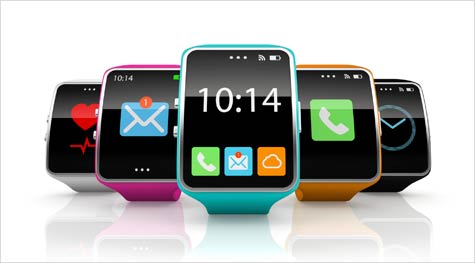If you think you have your hands full with the BYOD issue now, just wait until wearable technology pervades the enterprise. And oh, by the way: You won’t have to wait long.
That was one of my key takeaways from a recent discussion about wearable technology with Jim Haviland, chief strategy officer at VoxMobile, an enterprise mobility services provider in Independence, Ohio. According to Haviland, “wearables expand the possibilities for how and when people interact with apps and data, which can lead to more dramatic successes.”
I wanted to get a sense of what the big deal is about wearable technology, so I kicked off the conversation by asking Haviland what difference it makes whether the technology is wearable or not. In other words, how is the issue of wearable technology in the enterprise any different from the issues surrounding any other personal mobile technology in the workplace? Haviland said it’s a matter of scale:
We have been advocating for a while that security policy and architecture needed to move from managing devices to managing apps and data. When we help a client develop a BYOD policy, they often discover that they weren’t protecting themselves appropriately with their desktops and laptops—technology had changed, but they were still treating the hardware like it was all inside their secure garden walls. Smartphones, tablets, and now wearables, expose these issues due to the scale of their presence. Every survey you see where IT leaders are asked to predict how many BYOD devices are in use in their organizations ends up being dramatically low compared with the same survey offered to the employees they are serving. Everyone is an IT decision-maker now. If your policy is based on the notion that people won’t be able to figure out how to work around your hardened perimeter, or that you will be able to see who is bringing devices in, you have already lost.
I asked Haviland what specific types of wearable technology he expects to be most popular in the enterprise in 2015. He said it’s still early for mass adoption, but he’s seeing a lot of interest in watch-like devices:
With the right apps, they will be very useful for putting just the right information in front of someone at just the right time, providing haptic feedback to workers in places where a screen is not a good idea, and for allowing for things like worker safety—if the watch on an oil rig stops moving, you know that person is probably down. Most of the projects we see are in their early stages of development. In 2015, we’ll see the Apple device hit the executive suite, but 2016 will see lots of this form factor hit the rank-and-file.
I asked Haviland in what vertical industries he expects wearables to be most prevalent, and what particular types of wearables will be most prevalent in those industries. He said the clearest use case for wearables is in places where we would never have put any other device:
We have clients in energy, construction, and transportation that don’t have devices now, or who struggle to interface with it without compromising efficiency or safety. The watch form factor can be ruggedized, and we already know how to use them. The glasses, rings and even bracelets that shine a screen on your skin—these will take some time to find their place.
As for the biggest upside of wearables in the enterprise, Haviland said it’s all about the apps:
Hardware always gets the headlines, but apps are where the value creation happens in the enterprise. We have been using the mantra, “the right information on the right screen at the right time,” because the key to valuable innovation with mobility is all about application success and user experience. Wearables expand the possibilities for how and when people interact with apps and data, which can lead to more dramatic successes.
And the biggest downside? Security, of course:
Most organizations haven’t transitioned their security approaches and architectures to the contextual security approach that will keep information safe and enable organizations to embrace the next wave of form factors.
I asked Haviland what he sees as the future of wearables for personal identification purposes, in accessing computer systems and physical spaces. His response:
It’s a very good use case, especially by allowing you to incorporate two-factor authentication. Wouldn’t it be great to never have to look for your keys again? The thing about these devices is that they can respond and behave differently to changing conditions, and collect data about how they are being used to give feedback and create an auditable trail. If you realize you left your keys someplace, you can’t easily tell them to stop working on your doors.
Finally, I asked Haviland for his thoughts on the likelihood that wearable technology will evolve into embedded technology, such as embedded chips with identification and GPS tracking capability in humans. He said creepy or not, that discussion is going to be had:
We are having a lot of conversations these days about the nature of privacy, data ownership and security, and how all these new conveniences just feel creepy. Gartner has put forth that each person will have a different threshold on where they feel like the privacy they give up is worth the convenience they achieve—this is the creepiness threshold. I already have a chip embedded in my dog, and some convicts wear tracking devices that can’t be removed, so we know all the pieces are there. I know there will be opportunities in my lifetime where we will seriously consider the implications.
A contributing writer on IT management and career topics with IT Business Edge since 2009, Don Tennant began his technology journalism career in 1990 in Hong Kong, where he served as editor of the Hong Kong edition of Computerworld. After returning to the U.S. in 2000, he became Editor in Chief of the U.S. edition of Computerworld, and later assumed the editorial directorship of Computerworld and InfoWorld. Don was presented with the 2007 Timothy White Award for Editorial Integrity by American Business Media, and he is a recipient of the Jesse H. Neal National Business Journalism Award for editorial excellence in news coverage. Follow him on Twitter @dontennant.




